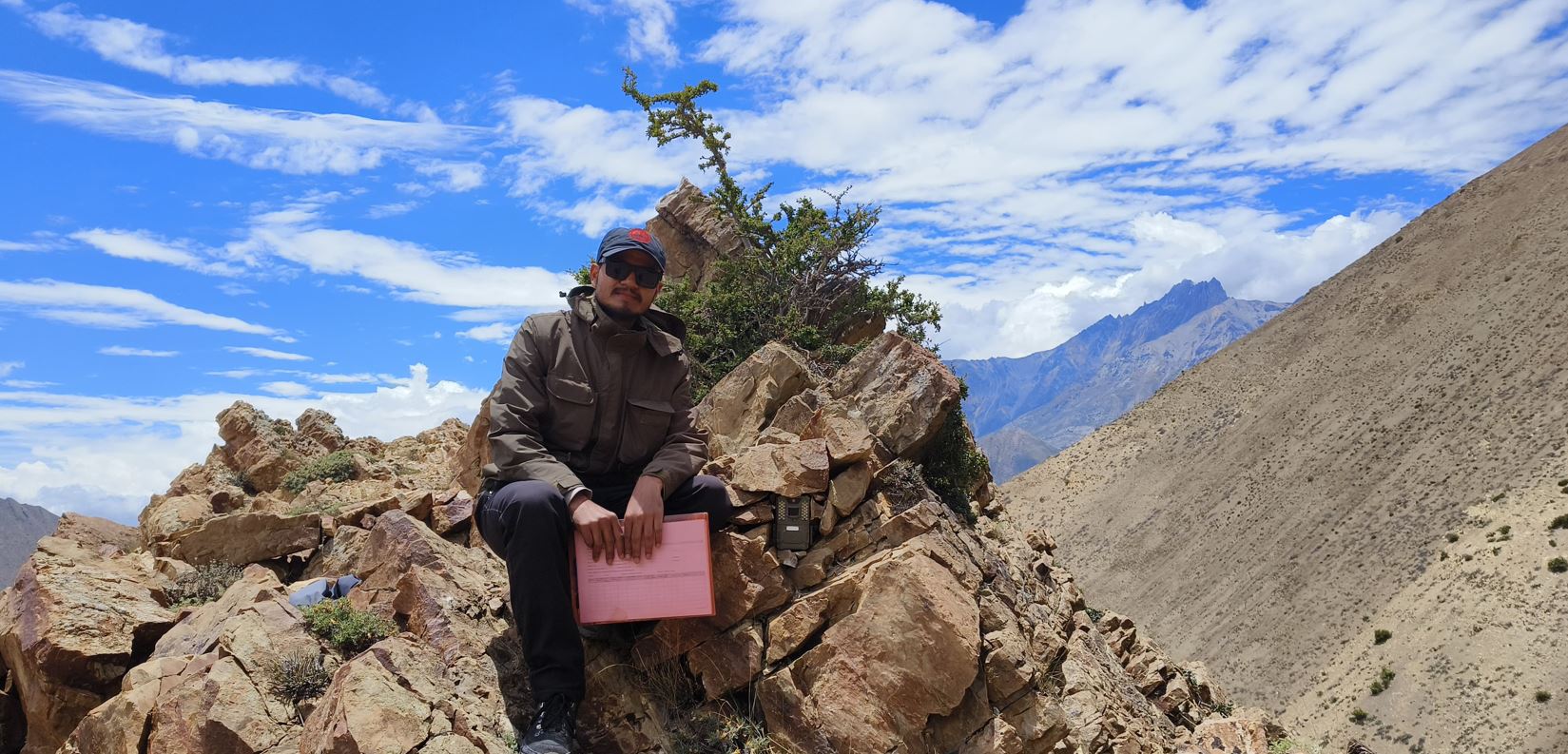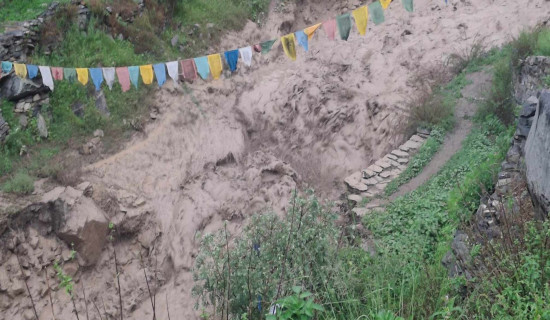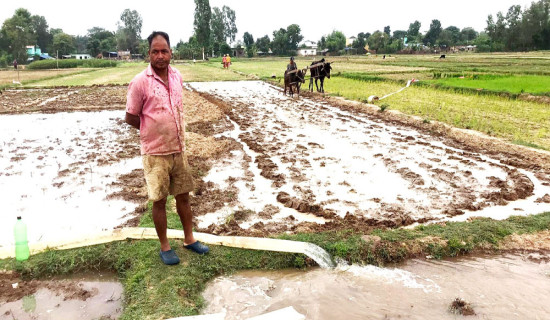- Thursday, 31 July 2025
Cameras installed to monitor habitats of snow leopards in Mustang
By Hari Krishna Sharma,Mustang, June 15: A survey has been conducted in three local levels of Lower Mustang to understand the habitat, behaviour and presence of the rare snow leopards and common leopards.
The Jomsom Area Office of the Annapurna Conservation Area Project (ACAP), under the National Trust for Nature Conservation (NTNC), has installed 32 cameras across the highlands, pastures, and forests of Thasang, Gharapjhong, and Baragung Muktikshetra rural municipalities to monitor and study snow leopards, common leopards, and their prey species.
According to Deepak Oli, Assistant for Natural Resource Conservation at ACAP Jomsom, cameras have been placed at 5-kilometre intervals in areas such as Muktinath, Jharkot, Lupra, Chhusang, Samar, Tetang, Bhajung, Jomsom Lek, Marpha Bataase Lek, and the high Himalayan grasslands bordering the neighboring district of Myagdi.
Due to recent wildfires and food scarcity in the forests of Myagdi, leopards enter Mustang’s grasslands in search of food, prompting the need for camera monitoring. Cameras have been installed at altitudes ranging from 3,000 to 4,600 meters above sea level to study how far snow leopards descend, how far common leopards ascend, and the conditions of prey species and habitats. “This method is useful to study the fragmentation of snow leopard and common leopard habitats and also makes it easier to understand the status of prey species,” he said.
The cameras will remain in place for 45 days, collecting data on the movements of snow leopards and common leopards, which will then be analysed in a laboratory, according to ACAP Jomsom. Due to the effects of climate change, snow leopards have recently been descending toward human settlements in search of prey, while common leopards are likely to move into higher Himalayan regions due to wildfires and other human-induced disturbances.
Snow leopards have been reported to cause damage to livestock, especially sheep and goats, in Mustang villages. Their primary prey is the Himalayan blue sheep (Naur). Last year, a study in Upper Mustang identified potential snow leopard habitats in Sangta, Lomanthang, and Damodar Kunda. The area was divided into three blocks, and 44 grids spaced 5 meters apart were set up for monitoring. Two cameras were installed in each grid, capturing not only snow leopards and their prey like Himalayan blue sheep but also other rare and endangered mammals.
Snow leopards, known for their elusive nature, are typically found at elevations ranging from 3,500 to 5,500 meters above sea level.




-square-thumb.jpg)
-square-thumb.jpg)











